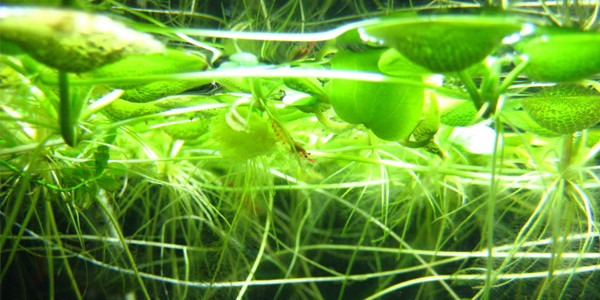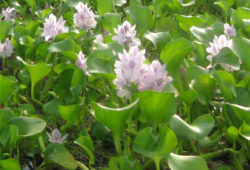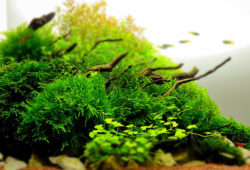Floating Plants for Your Aquarium
In the article you will find some basic information on Floating Plants for Your Aquarium. If you are fitting a freshwater or marine aquarium, presumably you will wish to include some aquatic flora, either as a central focus (in an exceedingly freshwater aquarium) or as a further visual element in a reef aquarium. Adding plants requires that you make acceptable adjustments in your substrate, water chemistry, lighting, filtration, and alternative support systems; you must guarantee that your vegetation will live comfortably in the ecosystem that you’re creating for your fish and other aquatic animal life. One straightforward way to quickly add flora to your aquarium is by introducing floating plants.

Floating plants can grow terribly quickly, with applicable lighting conditions. Additionally, floating plants serve a variety of secondary functions. They act as a biological filter, using up nitrates that accumulate within the water from fish waste. They can also act as a food supply for goldfish and different fish species; your fish will facilitate you retain the density of floating plants underneath control. If floating plants are allowed to grow rampantly, they will block light from penetrating to lower areas of your tank, inhibiting the expansion of alternative plants and organisms. Therefore if your fish don’t trim back sufficient amounts of floating plant life by consuming it, you may would like to thin it out yourself.
One easy floating plant to introduce to your tank is java moss. This moss reproduces vegetatively, as broken-off pieces establish themselves as new plants. It will attach itself to pieces of driftwood or rocks in your tank, and will be tied down till its growth has spread thickly along the surface of the wood. Java moss provides ideal cowl for breeding fish, particularly if it’s floated; baby fish like tetras and guppies can find refuge among the moss from alternative fish species in your tank that may be predators. As a shade dweller, java moss does not need a lot of light, and will best in unheated or moderately heated tanks. When you initially purchase this plant, a clump about the size of a tennis ball should be enough; it can propagate quickly.
Riccia fluitans is another free-floating plant without a root structure; its bright lime green color is eye-catching. Riccia grows in long, skinny strands that mesh together, either floating close to the top of your aquarium or anchored to a rock or piece of wood in your substrate. This plant can tolerate a range of water pH levels and hardness levels, but prefers plentiful light. If you wish to attach riccia to a rock or piece of driftwood, wrap the base of the strands to the anchoring piece with twine; when a few weeks, a bond will have formed and you can remove the twine.
Duckweed could be a shade lover that’s often found in outdoor fish ponds and fountains; floating on the surface, it can flourish in filtered light-weight or bright shade. In sturdy light-weight, duckweed tends to burn, thus this floating plant will solely be suitable for a low-lightweight tank. One of the smallest aquatic plants, with egg-shaped leaves less than a centimeter in length, duckweed helps take away waste product from your tank as half of its growth process. Because of its little leaf size, duckweed can not choke your tank, and some species of fish like to search out shelter here. It can tolerate a wide range of temperature and hardness levels in your tank water.
Greater duckweed is a larger variety of the duckweed family; the underside of the leaves are deep red, and therefore the leaves have multiple trailing roots. Larger duckweed needs stronger light than its smaller cousin, and provides cover for Siamese fighter fish, particularly when this species is breeding. Greater duckweed is also a food for goldfish, mollies, and different species, providing a high nutrient content. If greater duckweed is allowed to proliferate during a goldfish tank, your fish can help keep the plant cut back. Like the smaller varieties, this plants will thrive during a vary of temperature and hardness levels.
Pennywort, typically referred to as water ivy, is a stem plant that grows roots, but the roots don’t would like to be buried within the substrate, so the stems can hover freely in your tank. This can be a hardy plant that can tolerate a range of temperatures, hardness levels, and illumination levels; it’s happy in most aquarium environments.
Fontinalis is almost like java moss, and can be attached to driftwood or rocks in similar fashion, but it is a distinct species from java moss. Fontinalis prefers low light-weight and acidic water; its leaves are quite little but its stems can grow up to two feet in length.
Azzola may be a floating fern that’s most typically seen in outside fish ponds, but given strong light this plant will thrive in an indoor aquarium as well. It grows prolifically, however as a result of of its little leaf size, it will not choke the water surface. This hanging floating fern ranges in color from green to deep red; greener shades are additional usually found in shady conditions, and red in brighter light-weight and in water with high nitrogen content. Some azzola leaves even produced a rainbow impact in their coloration.
With this wealth of selections, it should be easy to pick a floating plant that is appropriate for your aquarium environment. Be certain to take into consideration the wants of your fish and other plant life, to ensure compatibility.



